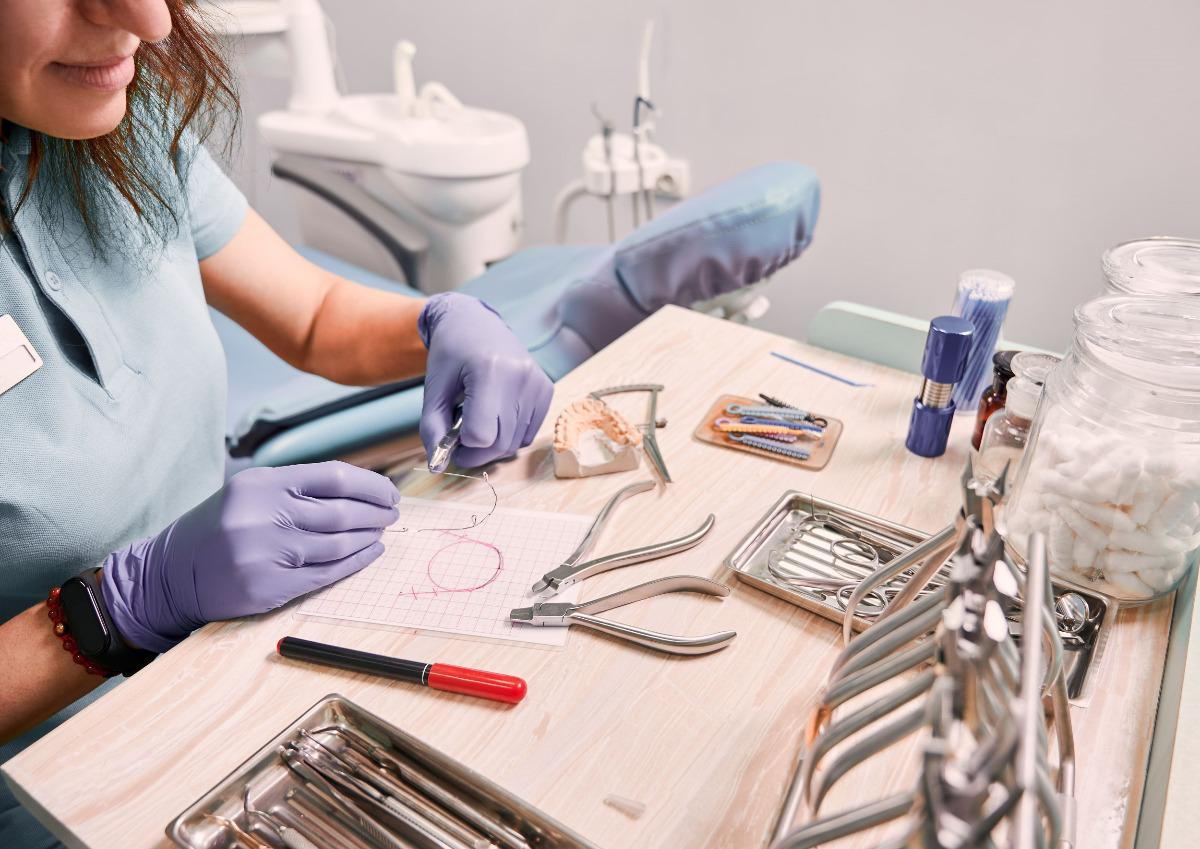
The field of dentistry has made significant progress in the past 100 years. According to the American Dental Association, there were only 2,000 licensed dentists in the United States in the early 1900s. However, this number has now grown to over 200,000, with a significant rise in specialized dental practices, techniques, and technology. In the past decade alone, there have been major advancements in areas such as 3D imaging, robotic surgery, sedation dentistry, and clear aligners. As we look towards the future, the dental industry is expected to continue evolving with the incorporation of artificial intelligence, smart sensors, and improved home care, resulting in enhanced dental health. Keep reading to discover the latest exciting developments in dentistry for 2024 and beyond!
Innovative Techniques for Dental Sedation
By the year 2024, dental clinics will introduce advanced techniques to ensure the comfort and relaxation of their patients during procedures. For those with severe anxiety, modern sedatives will be available that induce a state of relaxation without causing complete unconsciousness. These new medications will enable patients to remain conscious and responsive while eliminating any sensations of pain or discomfort.
Dentists are now able to provide specialized training in order to administer oral or inhaled sedatives in their office prior to procedures. These medications have lower chances of causing side effects compared to traditional IV sedation, which leads to a faster recovery. The implementation of new patient monitoring equipment also enhances the safety of sedation by closely monitoring vital signs and preventing excessive medication.
A few of the most recent developments in sedation dentistry are:
· Rapid-acting oral sedatives that take effect in 15-30 minutes are now available. These are suitable for brief procedures or appointments.
· Low-dose inhaled sedatives, such as a mix of nitrous oxide and oxygen, can be self-administered by patients through a mask during the procedure to stay calm.
· Combining different sedative drugs at lower doses is now being used to reduce potential side effects.
· Enhanced monitoring is possible with the use of modern tools like pulse oximeters, capnography, and blood pressure cuffs during sedation.
· Emergency procedures and reversal agents are in place to promptly awaken the patient from sedation if necessary.
Thanks to the latest advancements in dental sedation techniques, even individuals with severe anxiety can now undergo procedures with ease and without experiencing any distressing memories. Moving forward, the dental industry will prioritize the comfort and pain management of patients through the use of cutting-edge pharmacology and technology.
Improvements in Teeth Whitening Tools for Home Use
In 2024, there will be new whitening products available for use at home, offering patients convenient, quicker, and more cost-effective methods for achieving a whiter smile without the need for in-office appointments. These innovative whitening strips contain potent peroxide gel that can brighten teeth by up to 10 shades in only 14 days. These strips adhere to the teeth and can be worn comfortably while sleeping or engaging in other activities.
Handheld LED whitening devices, similar in size to toothbrushes, utilize blue light technology to activate whitening gel and effectively remove stains at a faster rate compared to using only strips. These compact tools are easily rechargeable, portable, and safe for enamel. In addition, patients can receive personalized whitening trays custom-made from dental impressions. These trays allow for the application of a professional-grade whitening gel directly onto the teeth for 1-2 hours each day until the desired shade is achieved.
Whitening toothpastes that can be bought without a prescription typically have higher concentrations of whitening agents such as hydrogen peroxide. Unlike strips or trays, they do not cause sensitivity issues. In addition, new whitening pens are available for quick touch-ups, allowing the direct application of a serum that fights stains to specific areas of the teeth.
By 2024, there will be a wider range of choices for at-home dental care, making it easier for patients to keep their teeth looking bright and white in between visits to the dentist. These options provide a safe and effective way to whiten teeth, and they are more cost-effective compared to treatments done in a dental office. It is recommended for patients to seek advice from their dentist in order to determine the most suitable DIY whitening techniques for their specific teeth.
Advancements in Dental Imaging
The development of 3D imaging has advanced the field of dentistry, offering improved precision and accuracy in diagnosing and planning treatments. By utilizing intraoral scanners, detailed 3D images of the oral cavity and teeth can be generated, surpassing the limited information provided by conventional 2D x-rays. This enables dentists to gain a holistic understanding of a patient's mouth.
Taking in the intricate information gathered from 3D scans, artificial intelligence has the ability to examine the images and identify potential problems. Through this, AI aids dentists in early detection of decay, cracks, and gum disease, surpassing previous capabilities. Additionally, this advanced technology automatically measures bone density and emphasizes any areas of potential concern.
Using 3D imaging and artificial intelligence results in a more timely identification of issues related to oral health for seniors. Additionally, this technology enhances the process of devising treatment plans, as it enables dentists to accurately visualize and pinpoint problematic teeth or areas. For instance, during implant placement surgery, the use of this technology enables precise mapping of crucial measurements and angles, allowing for the implant to be positioned perfectly.
In general, these advancements allow for a greater quality of treatment and more reliable results. Patients experience advantages from the precise targeting of problematic areas while avoiding unnecessary procedures. The utilization of technology also accelerates treatment timelines by improving diagnostic capabilities. With the continuous development of 3D imaging and AI in the field of dentistry, patients can anticipate a new level of quality care.
Tooth Sensors: The Advancements of Smart Technology
In 2024, the field of dental care may undergo a significant transformation due to the rapid development of smart tooth sensor technology. These sensors, which are embedded in tooth fillings, have the ability to track various oral health metrics such as pH balance, saliva production, glucose levels, and others. Through a connected mobile application, these sensors can provide immediate updates on an individual's oral health and also notify either the individual or their dentist of any potential issues.
One possible scenario is that the tooth sensor has the capability to identify a decrease in pH levels, which may suggest the initial stages of cavity formation. This can then alert the individual to step up their brushing routine or use specialized mouthwash to prevent the cavity from progressing. Additionally, these sensors can monitor enamel erosion, sensitivity to temperature, gum swelling, and other factors, essentially serving as an early detection system for oral health. As a result, both patients and dentists can take a proactive approach towards dental care.
Looking toward the future, new tooth sensors are being developed have the capability to track vital signs such as heart rate, breathing rate, and body temperature, thus expanding their ability to monitor overall health. These sensors are powered by small batteries that can last for several months without replacement. Although the technology requires further improvement before becoming widely used, smart tooth sensors are expected to offer valuable insights and preventive care for oral health in the year 2024 and beyond.
Innovative Equipment and Technology for Oral Care at Home
With the continuous developments in products for dental care at home, it has become simpler for individuals to keep up with their oral hygiene in between dental appointments. The emergence of intelligent toothbrushes allows for personalized feedback and can even connect to a mobile device to monitor brushing habits. Furthermore, advanced water flossers with various options can effectively clean between teeth and around orthodontic appliances such as braces. Additionally, teeth whitening kits now incorporate blue LED light to improve and expedite the whitening process directly from the comfort of one's own bathroom.
The advancement of technology has also impacted dental aligners as now 3D modeling enables the production of personalized aligners that perfectly fit an individual's teeth. The dental office provides patients with a set of aligners according to a scheduled plan, gradually shifting the teeth into their proper alignment. This modern form of dental aligners presents a more convenient and comfortable option compared to traditional braces.
The emergence of new dental care applications now enable individuals to remotely consult with their dentist, monitor the progress of teeth alignment, and receive notifications for ordering new aligners or replacement brush heads from the comfort of their own home. With the advancements in at-home dental care technology, it has become easier for patients to uphold a high standard of dental hygiene on a daily basis. When combined with professional in-office care, these at-home solutions assist patients in maintaining a beautiful smile.
Advancements in Cosmetic Dentistry
The field of cosmetic dentistry is expected to experience significant progress in 2024 due to the launch of novel materials and methods that produce more realistic outcomes. Specifically, advancements in dental veneers are anticipated. The development of improved ceramic veneer materials will accurately replicate the light reflection of actual teeth, resulting in veneers that are almost indistinguishable from natural teeth. These new veneers will also be thinner yet strong, reducing the need for extensive tooth reduction before placement.
Dental implants have been advancing at a rapid pace, with one of the latest developments being immediate load dental implants. These types of implants enable the placement of a permanent tooth right after the implant is inserted, eliminating the need for a removable denture while waiting for the implant to fuse with the bone. This immediate load capability is made possible by advancements in implant designs, surfaces, and placement methods that offer immediate stability and allow for immediate loading.
The dental industry is continuously introducing new materials for dental implants, such as zirconia. These zirconia implants have a natural tooth-like color and are known to be more long-lasting compared to the usual titanium implants. Furthermore, zirconia's compatibility with tissues has been found to improve soft tissue attachment and the integration of the implant. As a result, patients can anticipate quicker and more authentic results from dental implant procedures, without any necessary waiting time.
Final Thoughts
The recent progress that has been made in dentistry is highly impressive. From sedation techniques and aligners to the incorporation of AI and 3D imaging, the dental experience keeps getting more comfortable and efficient. To see what’s new in our office that will help improve your smile and achieve your dental health objectives, we highly recommend scheduling your next visit to explore the various innovative options available.

